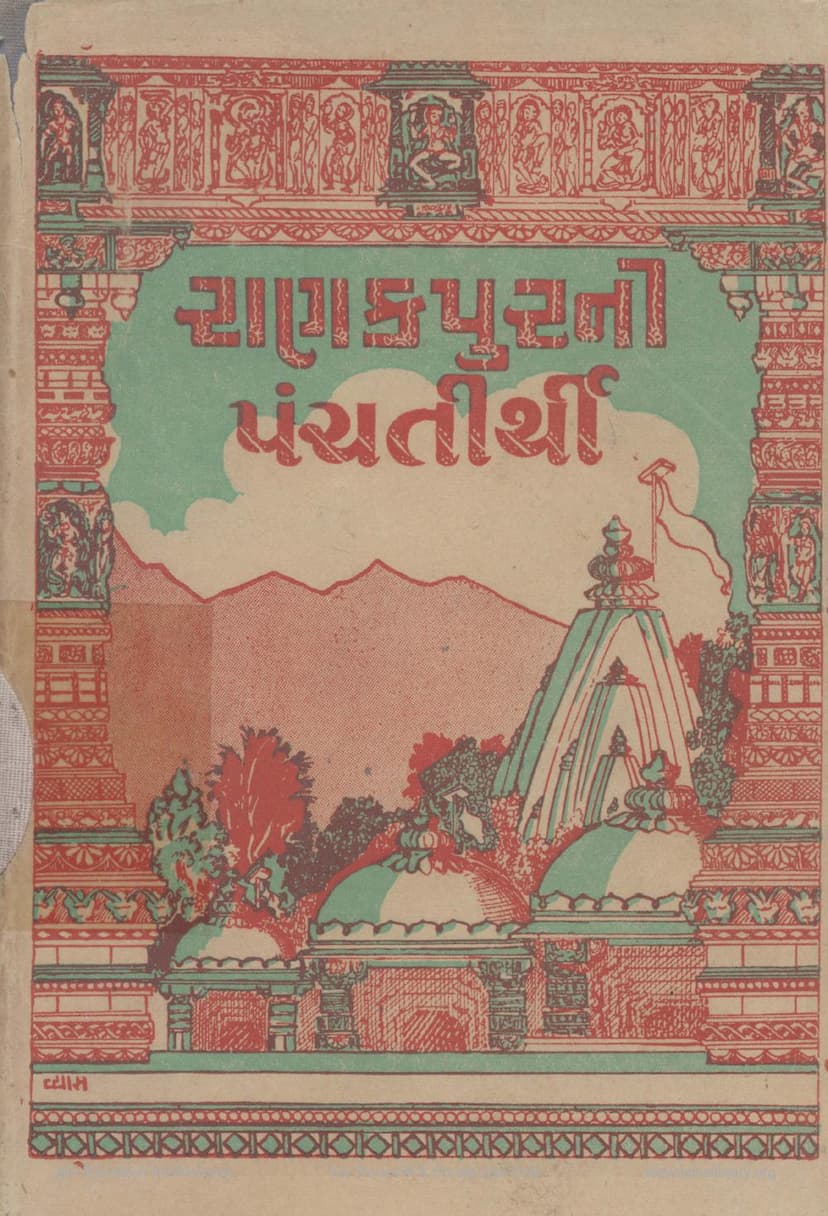Ranakpurni Panch Tirthi
Added to library: September 2, 2025

Summary
This book, "Ranakpurni Panch Tirthi" by Ambalal P Shah, published by Yashovijay Jain Granthmala, focuses on the five most important Jain pilgrimage sites, with a particular emphasis on Ranakpur.
Here's a breakdown of the key themes and information presented in the provided pages:
Overall Purpose:
The book aims to document and explain the historical, religious, and architectural significance of a "Panch Tirthi" (a group of five pilgrimage sites) important to the Jain community, primarily located in the Marwar and Godwad regions of Rajasthan, India.
Key Sites Covered:
The book seems to cover the following five pilgrimage sites, referred to as the "Ranakpur Panch Tirthi":
- Ranakpur: This is clearly the central and most extensively covered site. The text delves into its history, architecture, the main Dharan Vihar temple, the sculptor's artistry, the number of Jina images, the patron Dharan Shah, and the construction of the temple.
- Ghanerao - Muchhala Mahavir: This site is described, including its location and the temples within the village.
- Nadalai: Mentioned as the third tirth in the Panch Tirthi, with details on its history, population, Jain temples, and legends.
- Nadol: This is described as the fourth tirth, highlighting its historical significance as a capital city for Chauhan rulers, and its connection to Jainism.
- Varkanu: Considered the most ancient of the five tirths, its history and the current village of Varkanu are discussed, along with its significance as a center for Jain administration.
Key Themes and Information:
- Architectural Marvels: A significant portion of the text is dedicated to the detailed description of the Ranakpur temple, often comparing it to the Dilwara temples of Mount Abu. The text highlights its intricate carvings, numerous pillars, multiple stories, and the overall grandeur of its construction. The phrase "Dev Viman Jevu Mandir" (temple like a divine chariot) is used to describe the Ranakpur temple, emphasizing its celestial appearance.
- Historical Context: The book places these pilgrimage sites within their historical context, discussing the dynasties that ruled the regions (e.g., Guhilas, Chauhans, Rathores), their patronage of Jainism, and the socio-political conditions of the time.
- Patronage and Devotion: The role of wealthy patrons like Dharan Shah in the construction and maintenance of these magnificent temples is emphasized. Legends and stories associated with their devotion and the inspiration behind the temple designs are shared.
- Jain Heritage and Culture: The text provides insights into the spread of Jainism in the Marwar and Godwad regions, the prosperity of the Jain community, their contributions to art, literature, and society, and the historical presence of Jain settlements.
- Religious Significance: The importance of these sites as places of worship, pilgrimage, and spiritual solace for Jains is a core theme.
- Detailed Descriptions and Illustrations: The book is described as "Picture-Rich" (Sachitra), indicating the inclusion of numerous photographs and illustrations that would complement the textual descriptions.
- Linguistic and Literary Aspects: The presence of stanzas (stavans) composed by various poets like Shri Megh Kavi, Shri Gyanvimal Suri, Shri Vijayprabh Suri, Shri Samaysundar Upadhyay, Shri Vishalsundar, and Shri Udayratna Upadhyay is a significant feature, adding a layer of devotional literature to the historical and architectural information.
- Epigraphy and Inscriptions: The book includes detailed information about inscriptions found at these sites, providing valuable historical data and dating the structures and sculptures.
- Restoration and Maintenance: The text mentions the role of organizations like the Anandji Kalyanji Pedhi in the upkeep and renovation (jirnoddhar) of these ancient temples.
- Accessibility and Travel: Information on how to reach these pilgrimage sites, including railway stations and local transportation, is provided.
Specific Details about Ranakpur (Dharan Vihar):
- The temple is described as being built of white marble and is compared to a lotus blooming in a serene lake amidst mountains.
- It is noted as a unique example of medieval Gujarati and Rajasthani architecture, showing the influence of Abu temples.
- While its carvings and iconography might not match Abu's, its architecture and structure are considered outstanding, living up to its name "Trailokya Deepak" (lamp illuminating the three worlds).
- The temple has three stories, 24 mandapas (halls), 85 Shikharas (spires), and 1444 pillars.
- A legend suggests that Dharan Shah built it based on a dream of a divine aerial chariot called "Nalini Gulm Vimana."
In essence, "Ranakpurni Panch Tirthi" is a comprehensive guide to significant Jain pilgrimage sites, focusing on their historical, architectural, and religious importance, with a special emphasis on the magnificent Ranakpur temple and its patron. The inclusion of devotional poetry further enhances its value for the Jain community.